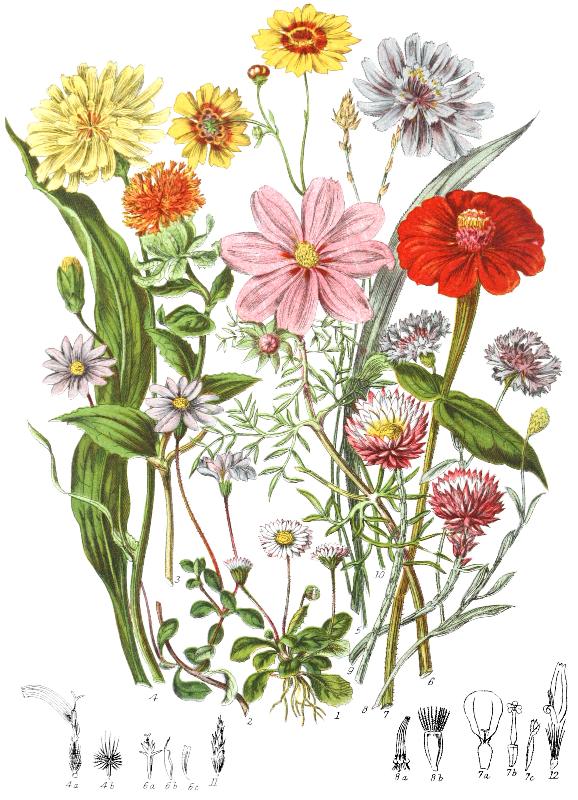
The Asteraceae
Members of the Asteraceae, or sunflower family, have...
Since the head of flowers often looks like a single flower that is a composite of many flowers, this family has also been known as the Compositae.

There are many unique traits of the Asteraceae. Understanding what various structures are and understanding the terms used to describe them is essential for identifying members of this family.
An individual flower of the Asteraceae has...
The fruit is an achene
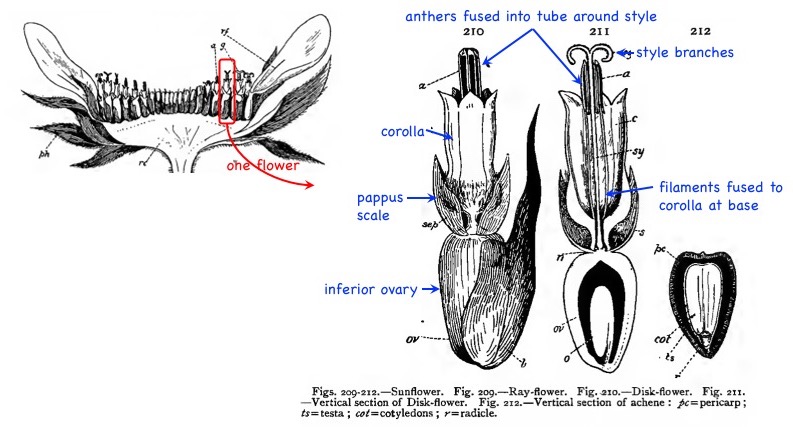
Anthers and style branches may have appendages, as shown below.
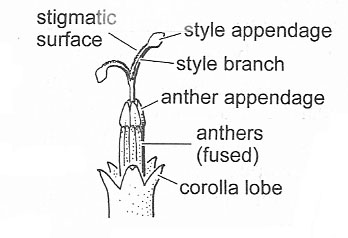
Corollas may have radially symmetry or bilateral symmetry. Beyond that, however, there are at least 3 types of corollas with bilateral symmetry and 2-3 with radial symmetry.
The figure below, from Allen and Roberts (2013), shows seven variations in corolla shapes. The most common, and those used in the Jepson Manual, are
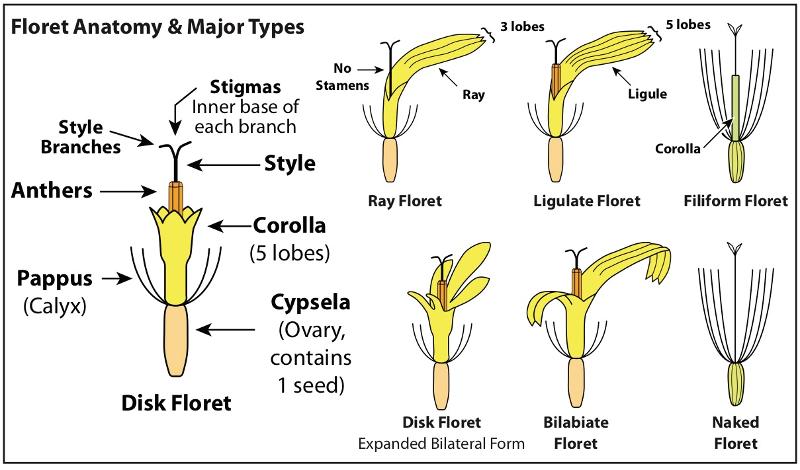
The pappus (the modified calyx) of the flower, may be...
 If the pappus consists of bristles, the bristles may be...
If the pappus consists of bristles, the bristles may be...
The function of the pappus is generally to help disperse the fruit. A pappus of long bristles, like that of dandelion, helps carry the achene through the air. A pappus of stiff needle-like awns usually stick in fur and socks and carry the achene away on an animal.
Heads of flowers may look very different depending on the type(s) of flowers attached to the receptacle.
A radiate head has two types of flowers: disk flowers in the center and ray flowers at the edge. The disk flowers are bisexual, but the ray flowers are typically pistillate or sterile. This is the head type seen commonly in daisies and sunflowers.
A liguliflorous head has only ligulate flowers.
A discoid head has only disk flowers.
A disciform head has disk flowers and marginal pistillate (or sterile) flowers with minute or missing rays. It looks very similar to discoid head.
A radiant head is a discoid head with the peripheral flowers (at the outer edge) having enlarged, often bilateral corollas
A two-page excerpt from Allen and Roberts (2013) shows head types and flower types in the Asteraceae.
Paleae on the receptacle
The receptacle may bear bristles or paleae between the flowers...or it may not. The term "palea", when used in the Asteraceae, refers to a scale like bract that subtends a single flower. "Paleae" is the plural form of "palea". Think of paleae as the leaves in whose axils the flowers were produced.
The diagram below shows a discoid head with paleae. Notice that a palea is not part of any flower and is not part of the involucre (a set of leaf-like bracts that subtend the entire head).
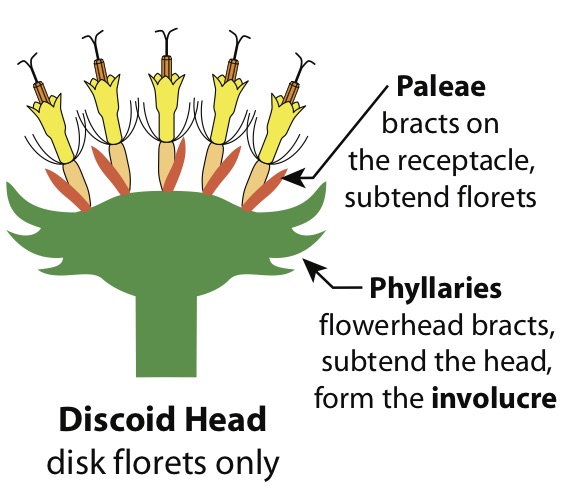
Occasionally, paleae are only found at the base of the outermost ring of flowers.
Receptacle shapes
Receptacle shape may be used to distinguish taxa in the Asteraceae. To look at the shape of the receptacle, you generally have to make a longitudinal section of the flower head. The receptacle may then be seen as being either flat, concave, convex, spheric, conical, or cylindrical.

The involucre that subtends a head of flowers in the Asteraceae consists of a set of bracts called "phyllaries". These are usually green and leaf-like.
The involucre can be described based on...
Shapes and characteristics of phyllaries are described using the same terms we use to describe leaf shapes and characteristics.
The arrangement of phyllaries is described with respect to the number of whorls of phyllaries in the involucre. A whorl is refered to as a "series". Typical descriptions include both (1) the series of phyllaries in an involucre and (2) whether phyllaries in different series are the same size or not.
Check your understanding:
Below are heads of flowers from four species in the Asteraceae.
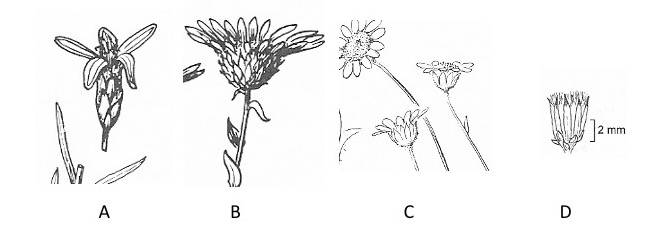
This keying exercise will be a guided exercise. The plant you will be identifying will be this one:

The first step is to identify all of the parts of the flowers and inflorescence.
Here is the inflorescence:
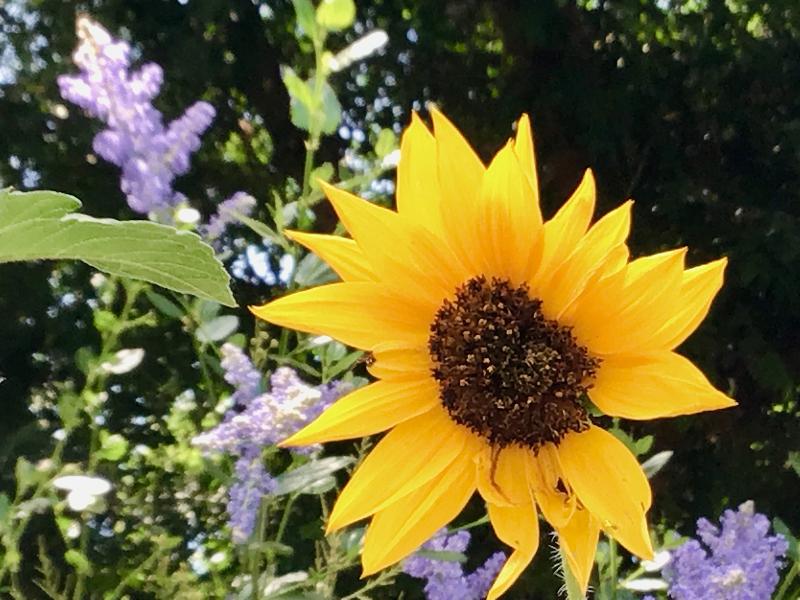
This is a longitudinal section of the head:
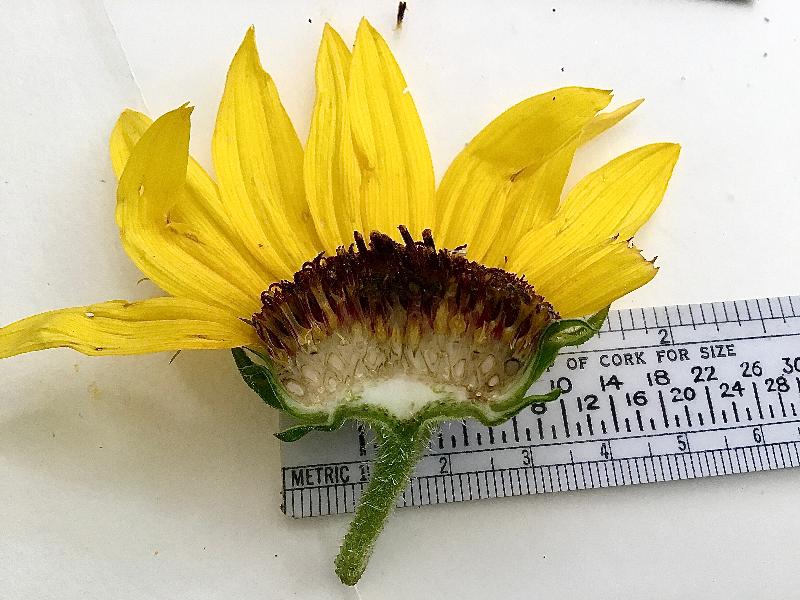
Ray flowers are usually pistillate or sterile. To develop fruit, the flower has to have both an ovary and a stigma/style (to receive pollen).
Last, note some basic information about the plant and the leaves:
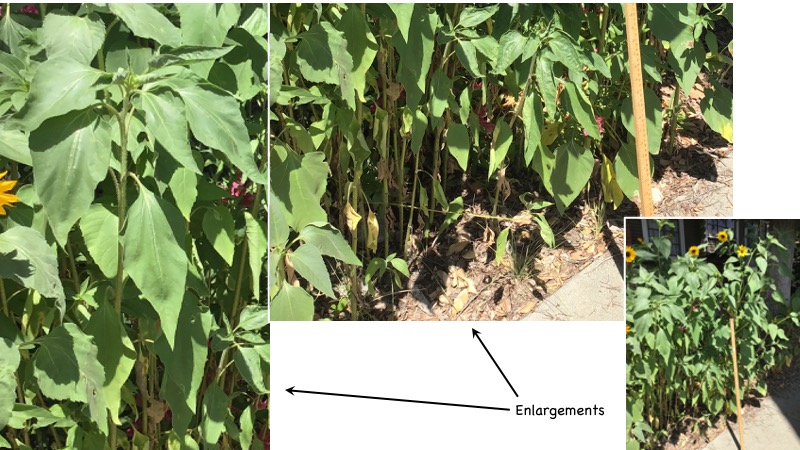
Now you are ready to begin working through the key. You already know that this plant is in the Asteraceae. In real life, you could go straight to the key to genera in the Asteraceae. For practice, though, start at the Key to Families in the Jepson eFlora.
The Asteraceae is a very large and variable family. Different species will have characteristics that lead you through the key in different directions. When you got to Asteraceae, you saw:
ASTERACEAE (2) {G6,7,8,9,12,14}
The "(2)" means that "Asteraceae" appears twice in this key (the Group 17 key).
The "{G6,7,8,9,12,14}" means that "Asteraceae" also appear in the keys for Groups 6, 7, 8, 9, 12, and 14 in the Key to Families.
Moving on to the Key to genera in the Asteraceae ("Key to Asteraceae"), you find that this is a very large key with groups (subkeys).
For this key you will need more information. Here is a photo of the involucre of your plant:
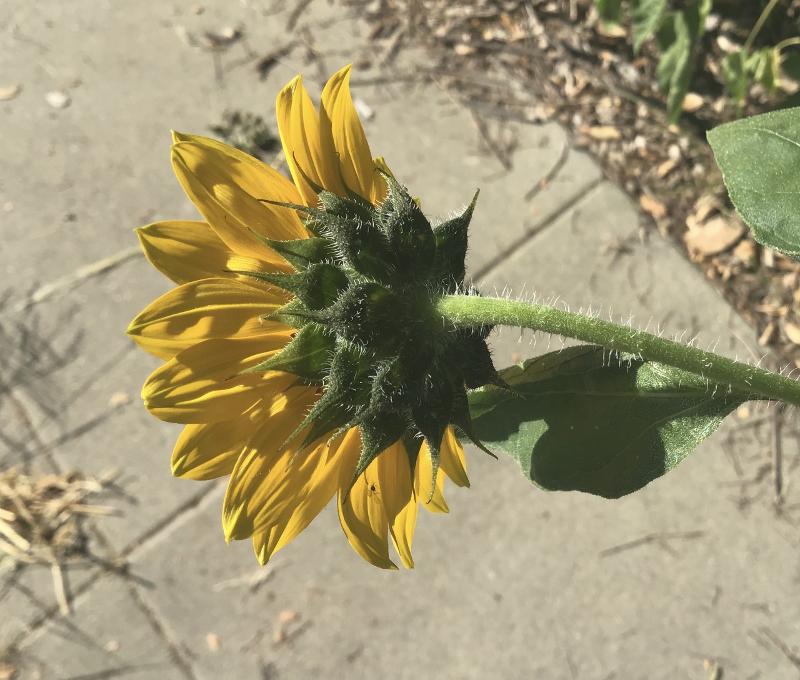
In the key for this group, Here is more information you will need:
Your first choice refers to the "rays". These are the strap-shaped corollas of the ray flowers.
The photo of paleae on the receptacle is shown again here:
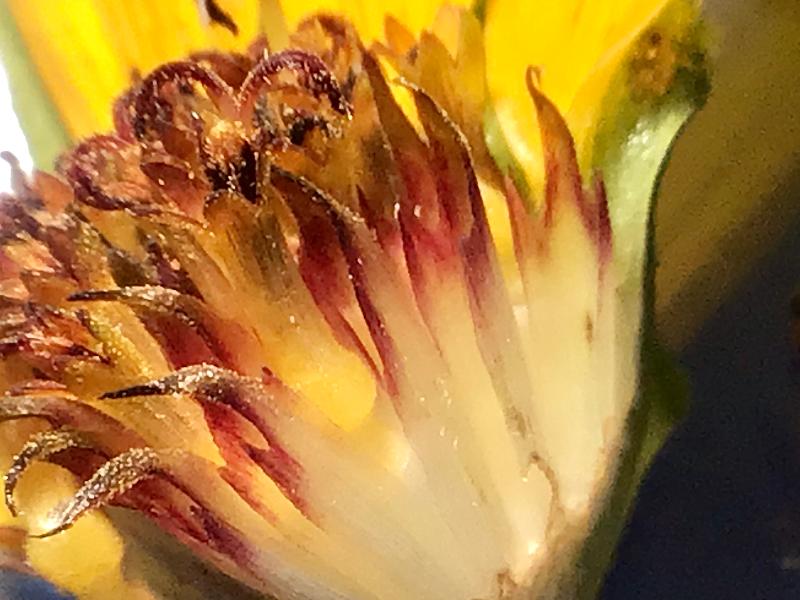
Achenes of this plant and achenes of a different species that has strongly compressed achenes is shown below:

Moving on to the Key to species in the Helianthus ("Key to Helianthus")...
Here are some more images you might need:
Phyllaries:
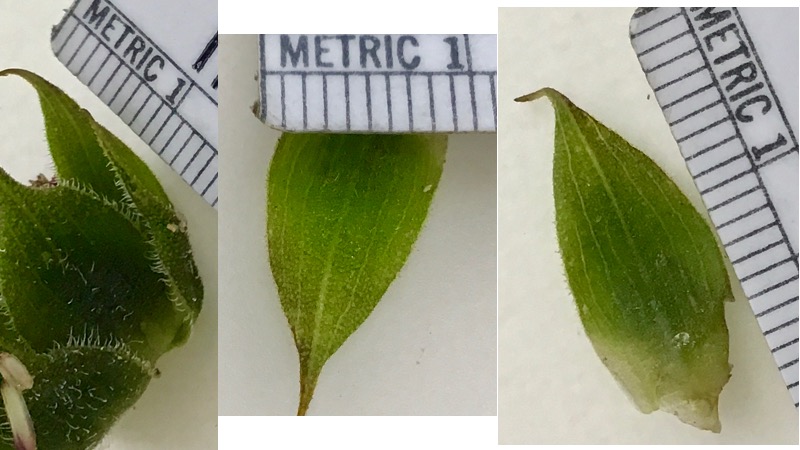
Leaves:

Stem surface:
